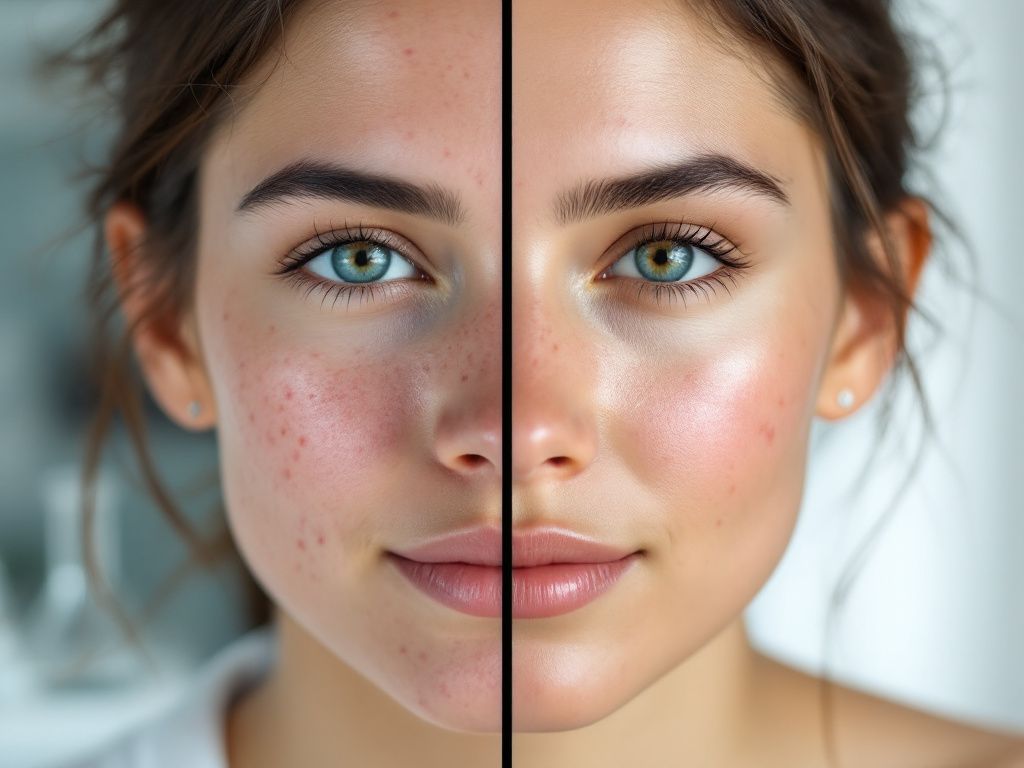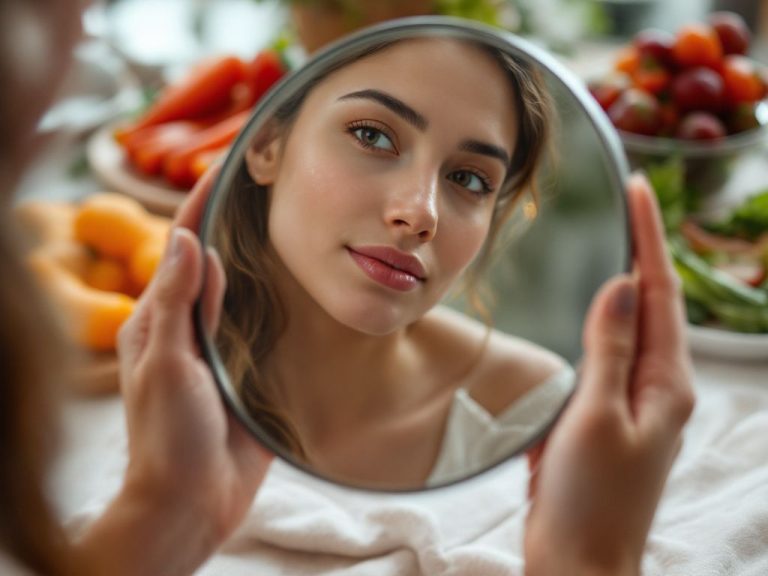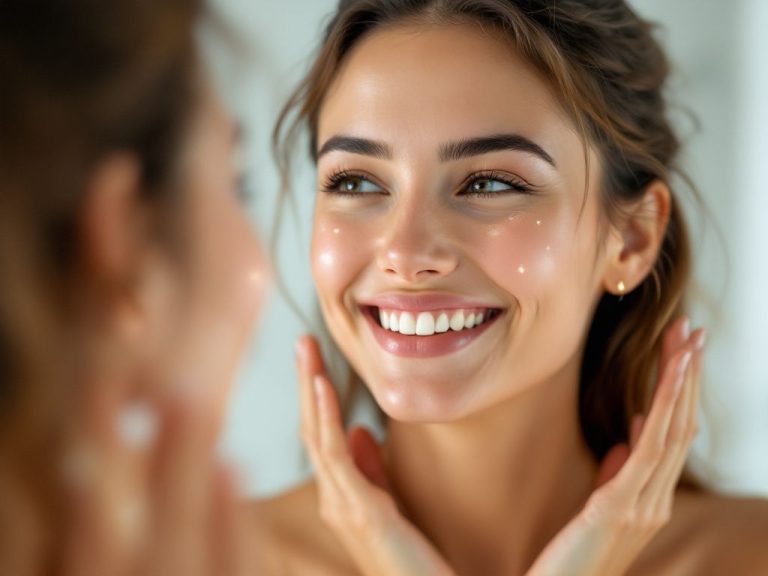Ever woken up, looked in the mirror, and deflated at the sight of those relentless breakouts? We’ve all been there. You thought you’d left “acne” back in your teenage years, but surprise—your hormones have a different plan. Let’s dive into the fascinating world of hormone-related acne, tackle where it comes from, why it feels like it turns up at the worst times, and, most importantly, what science snaps into action against it.
Table of Contents
ToggleThe Sneaky Culprit: Hormone-Related Acne
Alright, let’s get into it. Imagine your skin as this hyperactive teenager, that’s eternally stressed and occasionally rebellious. The real contrivers here are your hormones. When they’re partying too hard or snoozing in their activity cycle, that’s when acne rears its stubborn head. Hormone-related acne, you may have guessed, revolves around the rhythmic yet unpredictable ballet of hormones dancing through your bloodstream.
The Hormonal Symphony: Understanding the Endocrine System
Here’s where things get mildly scientific. Think of your **endocrine system** as an orchestra. Yes, really. It’s responsible for managing hormones—that command your skin to behave or misbehave. Made up of a violin section enthusiastically plucking away, the pitiless cymbals crashing, and the flutes humming sweet harmonies—your glands work in similarly complex orchestration. This includes the adrenal glands, the thyroid, and the big bosses—your ovaries or testes.
Now, any miscommunication in this symphony? You can blame that for causing oil production amplification, clogged pores, and, voilà—acne. Hormonal imbalances, huh?
Why Hormonal Balance is Key

When hormones fall out of sync—they can make sebaceous glands overexcited, producing more oil. This oil grabs dirt and dead skin cells like some misguided souvenir collector. Pores get clogged, and bacteria have a little fiesta, resulting in breakout central.
But that’s not all. Hormonal fluctuations trigger different kinds of acne depending on your current life escapes. Expect breakouts near menstruation or during menopause. Even the wonders of teenhood and pregnancy can invite acne.
Here’s a juicy tidbit—men can also experience these wonderful hormonal hijinks, often evident as adult acne. Testosterone dips and plummets can cause oily skin and, surprise, acne!
Embarking on Acne Control: Scientific Approaches
Okay, great. So, what do we do about it? Let’s delve into strategies that scientific knowledge promises for making peace with hormone-related acne.
1. Keep Your Skin in Top Shape
This might seem like something the lady at the store would say, but trust me, start here: cleanse. And hey, I’m not talking about harsh scrubs that’ll leave your skin weeping. Use gentle cleansers that respect your skin’s natural oils like precious cargo.
2. Moisturize—It’s Not Optional

Remember when someone suggested not using moisturizer because why add oil if oil’s the problem, right? Total myth. Understand that dehydrated skin desperately holds onto water—which keeps oil galore. A non-comedogenic moisturizer can severely revamp this situation.
3. Spot Treat with Accuracy
Get your hands on scientifically-backed spot treatments. Speak salicylic acid, benzoyl peroxide, and retinoids. Salicylic acid cuts through oil like a hot knife through butter, while retinoids speed up cell turnover.
4. Embrace Hormonal Therapy
Yup, medications exist to help create harmony in your hormonal orchestra. Birth control pills, anti-androgens, and retinoids are often deployed to balance your inner chemical scene. Consulting a dematologist and endocrinologist will arm you with chemical knowledge to tackle hormone-induced zits scientifically.
5. Mind Your Diet and Lifestyle
We don’t know all your guilty-pleasure foods like cheese or chips. However, finding balance in your diet can lessen skin inflammation. Avoid high glycemic index foods—that’s sugar, sweet splurges, and refined grains. Swap them out with omega-rich options that’ll send love notes to your skin.
6. Stress-Less, Sleep More

Stress is that nosy friend who just won’t leave your immune system be. When stress skyrockets, cortisol rises too, and so does your skin’s oil production. Make ‘sleep’ a talking point. Get comfy with downtime activities like yoga, or light strolls, replacing count-your-sheep nights with actual sleep.
Common Mistakes on the Path of Hormone-Related Acne Mastery
Real talk: If “just grin and bear it” was a thing, in not dealing with acne, it wouldn’t magically budge. Here are some no-nos that many find themselves trapped in.
- Mistake #1: Popping and Prodding: Yes, it’s incredibly tempting, but know that it fuels infection and scarring. Bah humbug!
- Mistake #2: Ignoring Scalp and Hair Products: These products often take the blame in clogging pores. Choose oil-free hair stuffter, checking ingredient labels could save you.
- Mistake #3: Not Checking Ingredients: For someone pursuing clearer skin, this is crucial. Look for products labeled ‘non-comedogenic’.
Recap Moment
We’ve wandered into hormone-hiatus land, understood the inevitable association with acne during our dynamic life phases, and realized how pivotal our endocrine harmony is. Remember this: Science backs plenty of actionable tactics at your reach—grab that gentle cleanser, envision your endocrine stabilizers in spotlight concerts, and manage stress like a pro.
Wrapping up, stress big-time, doesn’t do magic—do individuality. Not every tip touches every individual. Consult professionals who’ll personalize advice uniquely tailored to you. Round up self-kindness, time, and a genuinely curious science mind.
So there you have it, a genuine chat about hormone-related acne, which won’t melt like persistent patter distractions. Stay scientific or reach that creative solution like—just relish discovering your skin’s symphony notes!
Frequently Asked Questions
What causes hormone-related acne?
Hormone-related acne is primarily caused by fluctuations in hormonal levels, particularly an increase in androgens such as testosterone. This increase stimulates the sebaceous glands to produce more sebum, which can clog pores and lead to acne. Hormonal changes during puberty, menstrual cycles, pregnancy, menopause, and conditions like polycystic ovary syndrome (PCOS) can trigger these fluctuations[1][4][5).
What are the common triggers for hormone-related acne in women?
In women, common triggers for hormone-related acne include menstrual cycles, pregnancy, menopause, and changes in hormonal birth control methods. Additionally, stress and certain medications, such as those with androgenic effects, can also exacerbate acne[1][3][4).
How is hormone-related acne treated?
Treatment for hormone-related acne can include over-the-counter products containing salicylic acid, glycolic acid, or benzoyl peroxide. For more severe cases, prescription treatments such as birth control pills, oral vitamin A, spironolactone, topical retinoids, antibiotics, and steroids may be necessary. In cases of cystic acne, isotretinoin (Accutane) or corticosteroid injections may be recommended[1][2][4).
Can lifestyle changes help manage hormone-related acne?
Yes, lifestyle changes can help manage hormone-related acne. Keeping a journal to track acne breakouts and their potential triggers, engaging in low-stress activities, avoiding comedogenic products, and maintaining good skincare habits can be beneficial. Additionally, ensuring adequate sleep and managing stress through techniques like exercise or relaxation can help mitigate acne flare-ups[2][3][5).
References- Hormonal Acne – Dr. Aliabadi.
- Hormonal Acne: Causes, Diagnosis, and Treatment Options – Dermatology Associates.
- Adult female acne: a guide to clinical practice – PMC – PubMed Central.
- Hormonal acne: Causes and treatment – MedicalNewsToday.
- Hormones and cystic acne: what you need to know – Nebraska Medicine.








